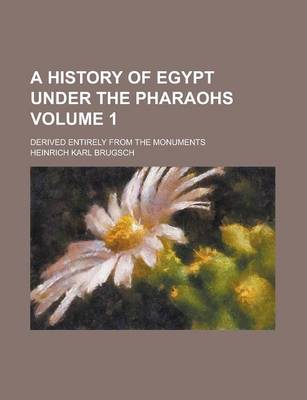Cambridge Library Collection - Egyptology
3 total works
A History of Egypt under the Pharaohs, Derived Entirely from the Monuments: Volume 2
by Heinrich Karl Brugsch
Published 12 September 2013
The most lasting achievement of the German Egyptologist Heinrich Karl Brugsch (1827–94) is perhaps his work on the Egyptian demotic script, which had been relatively neglected since Champollion's death. This two-volume illustrated history of Egypt, 'derived entirely from the monuments', was first published in an English translation (by H. D. Seymour, from the 1876 first German edition, and edited by Philip Smith) in 1879. Brugsch brings to bear his wide experience of the archaeological sites together with his linguistic expertise, and deliberately eschews later Greek and Roman accounts of Egypt. Volume 2 covers the period from the Nineteenth Dynasty, the time of the empire's widest extent under Seti I and Rameses II, through the later decline and disintegration, with ruling dynasties from Nubia and Assyria, to the Persian conquest in 525 BCE. An appendix discusses the biblical account of Exodus in the context of Egyptian material remains.
A History of Egypt Under the Pharaohs; Derived Entirely from the Monuments Volume 1
by Heinrich Karl Brugsch
Published 12 October 2012
The most lasting achievement of the German Egyptologist Heinrich Karl Brugsch (1827-94) is perhaps his work on the Egyptian demotic script, which had been relatively neglected since Champollion's death. This illustrated two-volume history of Egypt, 'derived entirely from the monuments', was first published in an English translation (by H. D. Seymour, from the 1876 first German edition, and edited by Philip Smith) in 1879. Brugsch brings to bear his wide experience of the archaeological sites together with his linguistic expertise, and deliberately eschews later Greek and Roman accounts of Egypt. Volume 1 gives a detailed survey of the physical environment of Egypt before considering the pre-dynastic period, and the emergence of Menes, the first known pharaoh. He then takes the narrative through the Old and Middle Kingdoms, and the intermediate period, to the emergence of the New Kingdom and the flowering and end of the Eighteenth Dynasty.
A History of Egypt under the Pharaohs, Derived Entirely from the Monuments
by Heinrich Karl Brugsch
Published 19 March 2015

